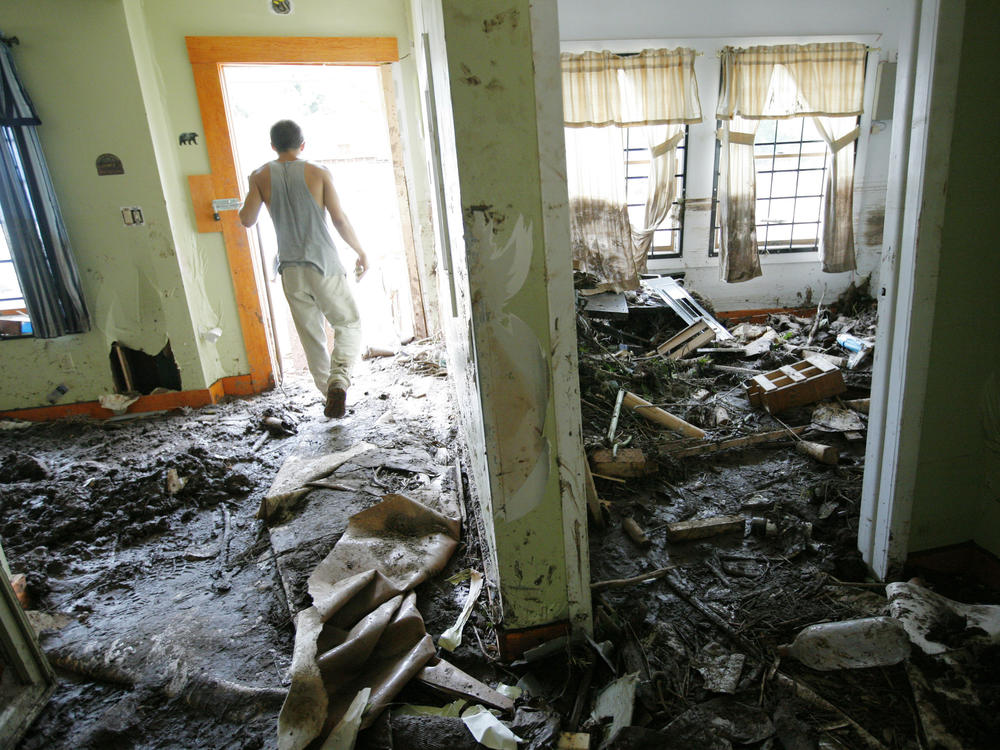Section Branding
Header Content
The human cost of climate-related disasters is acutely undercounted, new study says
Primary Content
Dr. Latoya Storr was an emergency medicine physician for a hospital in Grand Bahama when Hurricane Dorian ripped across the island in 2019. The hospital flooded four feet deep in places. Storr and her colleagues had to move the intensive care unit, pediatric department, and maternal care into the emergency room area—the only space not totally flooded.
Storr was particularly struck that the health risks for her patients didn't stop when the storm passed. In the first few days after the hurricane, patients showed up with bad bruises from escaping floodwaters or trying to fix their houses. People came to the hospital who had lost their medications when power went out, or they couldn't refill prescriptions. Weeks later, people started showing up with breathing issues because mold had started to grow in their flooded homes.
Storr knows it's not the last time she'll experience a catastrophic storm. "Unfortunately, with climate change, one of the fears that we have is that they may be more severe in intensity," she says—a fear supported by years of climate research.
A new study published in Nature Medicine looks directly at the human health impacts from severe weather like hurricanes, floods, and intense storms. The study examined Medicare records before and after weather disasters that incurred more than $1 billion of damages from 2011 to 2016. The analysis didn't include Hurricane Dorian, but it finds exactly what Storr saw: emergency admissions, and even deaths, are higher than expected for days and weeks after storms.
"Based off experience that we've seen unfold in the U.S. and elsewhere, we see that there's destruction and disruption to our ability to deliver the high-quality care we want to give patients in the weeks following the weather disasters," says Renee Salas, an emergency department physician at Massachusetts General Hospital. She's also a researcher at Harvard's T.H. Chan School of Public Health and the study's lead author. The study found that six weeks after a storm, the death rate in counties with the greatest destruction was 2 to 4 times higher than in less impacted areas.
That's a big jump—and those deaths, Salas says, likely went uncounted in the official death tolls.
Emergency departments saw significant upticks in admissions for about two weeks following most major disasters. They could expect about 1,100 extra people to come through their doors in the first week after an average-sized hurricane, and about 30 additional deaths in the first week after a severe storm.
The study focused on what happened after extreme weather events that cause more than $1 billion in damage every year. That's a category that has grown steadily over the past decade, driven in part by climate change which can worsen weather phenomena like hurricanes, severe storms, and floods. The U.S. Census Bureau recently estimated 2.5 million Americans were forced from their homes by weather disasters in 2023. In that year alone, the costs of damages to homes, roads, and other infrastructure from extreme weather totaled over $90 billion. Because health costs aren't folded into that number, it's probably an underestimate, Salas points out.
Salas's team compared Medicare data from before and after storms or floods in counties that experienced significant economic damage. They looked from 2011 to 2016—a period that included Hurricanes Sandy and Irene and major storms in the Midwest in 2012. The researchers didn't include weather disasters like wildfires and droughts, because the long duration of such events complicates the statistical analyses.
They also did not include heat despite heat killing more people in the U.S. than any other type of weather disaster. That's because the billion-dollar disaster database, which the National Oceanic and Atmospheric Administration compiles, notably does not include most extreme heat events.
Similar analyses of post-disaster health impacts have been done for individual storms or disasters, says Kai Chen, an environmental health researcher at Yale University. But they rarely look out more than a few days. Chen says this new study—which looked at many disasters over several years — shows that the human costs of extreme weather are drastically undercounted.
Even the new Harvard analysis likely "could be a conservative number," Chen says. Medicare covers only about 20% of the U.S. population. More people are likely being affected than were captured in the study. Chen says adding in smaller storms, heat, or wildfire health impacts would balloon the numbers.
Weather disasters have "pronounced human impacts," says Greg Wellenius, an environmental epidemiologist at Boston University. He thinks that identifying those real costs, and tracking them more systematically, will help policymakers, hospital directors, and city planners figure out how to "build resilience in our communities to help protect people today and into the future," he says.
Salas remembers a patient who came directly to the emergency department in Boston after getting off a plane from Puerto Rico a few weeks after Hurricane Maria in 2017. She had a ziplock baggie full of empty prescription bottles. Pharmacies on the island didn't have her medications. Salas says it was a clear example of the underappreciated impacts of extreme weather on health.
"Given that billion-dollar disasters have intensified and become much more frequent in the subsequent years, this is something we need to get a handle on," says Salas.

